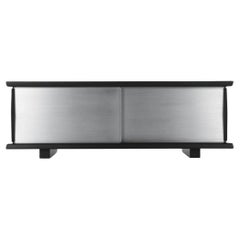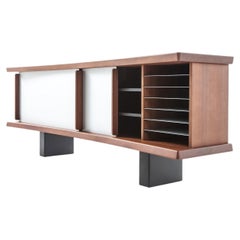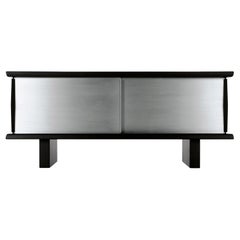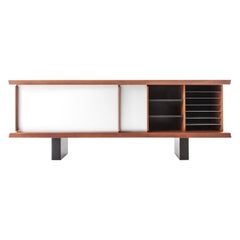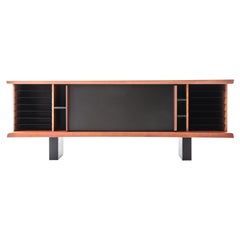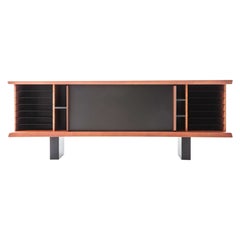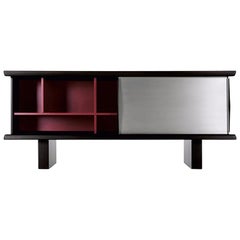Cassina Riflesso
2010s Italian Mid-Century Modern Cupboards
Aluminum
2010s Italian Mid-Century Modern Cupboards
Aluminum
2010s Italian Mid-Century Modern Cupboards
Aluminum
2010s Italian Mid-Century Modern Cupboards
Aluminum
2010s Italian Mid-Century Modern Cupboards
Aluminum
2010s Italian Mid-Century Modern Cupboards
Aluminum
21st Century and Contemporary Italian Mid-Century Modern Cupboards
Aluminum
Recent Sales
Early 2000s Italian Mid-Century Modern Credenzas
Aluminum
People Also Browsed
Vintage 1960s American Mid-Century Modern Sectional Sofas
Velvet, Walnut
20th Century Czech Posters
Paper
Vintage 1950s Finnish Scandinavian Modern Flush Mount
Metal, Aluminum
2010s American Modern Side Tables
Steel, Iron
21st Century and Contemporary Danish Mid-Century Modern Wall Mirrors
Brass
Vintage 1960s Italian Mid-Century Modern Flush Mount
Brass
21st Century and Contemporary Italian Mid-Century Modern Benches
Velvet, Foam, Wood
Vintage 1960s Italian Mid-Century Modern Table Lamps
Brass
Vintage 1960s Mid-Century Modern Flush Mount
Metal
21st Century and Contemporary Danish Mid-Century Modern Chairs
Oak
21st Century and Contemporary Italian Mid-Century Modern Chandeliers and...
Metal, Aluminum, Brass
21st Century and Contemporary Belgian Modern More Lighting
Brass
21st Century and Contemporary Italian Modern Side Tables
Steel
Antique 19th Century Swedish Console Tables
Pine, Paint
21st Century and Contemporary Australian Minimalist Chandeliers and Pend...
Brass
2010s American Organic Modern Side Tables
Wood, Pine
Charlotte Perriand for sale on 1stDibs
A pioneer of modernism in France, Charlotte Perriand was one of the most influential figures in 20th-century design and architecture. In her long career, Perriand’s aesthetic grammar constantly evolved, moving from the tubular steel furniture of the Machine Age to a lyrical naturalism that is reflected in her enduring designs for chairs, sconces, daybeds and other works.
Perriand’s studies at the Ecole de L'Union Centrale de Arts Decoratifs left her enthralled by Charles-Édouard "Le Corbusier" Jeanneret and his vision of a new, rational architecture. In 1924, she joined his studio to design furniture along with Pierre Jeanneret, Corbu’s partner and cousin.
Together, they devised some of the finest examples of early modernist furniture, including two icons of the era: the B306 chaise — later renamed the LC4 — with its swooping frame and hide upholstery; and the chunky, steel-framed Grand Confort club chair. Both pieces were part of the LC line, which saw the trio of designers carrying out bold experiments with tubular chromed steel, just as architect and Bauhaus faculty member Marcel Breuer had executed with his cantilever Cesca chair around the same time. (Furniture created by Perriand, Le Corbusier and Pierre Jeanneret was originally produced by Austrian manufacturer Thonet but Italian firm Cassina acquired the production and sales rights to their works in 1964.)
Collaborative design produced another Perriand triumph: in the early 1950s, she and Jean Prouvé were engaged to produce desks, worktables and bookcases for the University of Paris. The bookcases — slim pine shelves with brightly painted aluminum dividers — are minimalist mid-century masterpieces.
By the end of that decade, Perriand’s aesthetic had changed completely from the earliest days of her career. She produced a series of furniture in ebonized wood: chairs with gentle S-curve legs, front and back; tables with elliptical tops. In the 1960s, Perriand pushed the boundaries of prefab to produce high-quality housing and furnishings at low cost for the French ski resort Les Arcs. She also adopted an almost rustic look at the time, designing simple chairs with dowel-cut frames and rush seats.
Everything in Perriand’s oeuvre is beautiful, whether it’s the centerpiece of a décor or an accent, and her work is in every great design collection, public and private.
The vintage Charlotte Perriand furniture for sale on 1stDibs includes stools, coffee tables, case pieces, lighting and more.
A Close Look at Mid-century-modern Furniture
Organically shaped, clean-lined and elegantly simple are three terms that well describe vintage mid-century modern furniture. The style, which emerged primarily in the years following World War II, is characterized by pieces that were conceived and made in an energetic, optimistic spirit by creators who believed that good design was an essential part of good living.
ORIGINS OF MID-CENTURY MODERN FURNITURE DESIGN
- Emerged during the mid-20th century
- Informed by European modernism, Bauhaus, International style, Scandinavian modernism and Frank Lloyd Wright’s architecture
- A heyday of innovation in postwar America
- Experimentation with new ideas, new materials and new forms flourished in Scandinavia, Italy, the former Czechoslovakia and elsewhere in Europe
CHARACTERISTICS OF MID-CENTURY MODERN FURNITURE DESIGN
- Simplicity, organic forms, clean lines
- A blend of neutral and bold Pop art colors
- Use of natural and man-made materials — alluring woods such as teak, rosewood and oak; steel, fiberglass and molded plywood
- Light-filled spaces with colorful upholstery
- Glass walls and an emphasis on the outdoors
- Promotion of functionality
MID-CENTURY MODERN FURNITURE DESIGNERS TO KNOW
- Charles and Ray Eames
- Eero Saarinen
- Milo Baughman
- Florence Knoll
- Harry Bertoia
- Isamu Noguchi
- George Nelson
- Danish modernists Hans Wegner and Arne Jacobsen, whose emphasis on natural materials and craftsmanship influenced American designers and vice versa
ICONIC MID-CENTURY MODERN FURNITURE DESIGNS
- Eames lounge chair
- Nelson daybed
- Florence Knoll sofa
- Egg chair
- Womb chair
- Noguchi coffee table
- Barcelona chair
VINTAGE MID-CENTURY MODERN FURNITURE ON 1STDIBS
The mid-century modern era saw leagues of postwar American architects and designers animated by new ideas and new technology. The lean, functionalist International-style architecture of Le Corbusier and Bauhaus eminences Ludwig Mies van der Rohe and Walter Gropius had been promoted in the United States during the 1930s by Philip Johnson and others. New building techniques, such as “post-and-beam” construction, allowed the International-style schemes to be realized on a small scale in open-plan houses with long walls of glass.
Materials developed for wartime use became available for domestic goods and were incorporated into mid-century modern furniture designs. Charles and Ray Eames and Eero Saarinen, who had experimented extensively with molded plywood, eagerly embraced fiberglass for pieces such as the La Chaise and the Womb chair, respectively.
Architect, writer and designer George Nelson created with his team shades for the Bubble lamp using a new translucent polymer skin and, as design director at Herman Miller, recruited the Eameses, Alexander Girard and others for projects at the legendary Michigan furniture manufacturer.
Harry Bertoia and Isamu Noguchi devised chairs and tables built of wire mesh and wire struts. Materials were repurposed too: The Danish-born designer Jens Risom created a line of chairs using surplus parachute straps for webbed seats and backrests.
The Risom lounge chair was among the first pieces of furniture commissioned and produced by celebrated manufacturer Knoll, a chief influencer in the rise of modern design in the United States, thanks to the work of Florence Knoll, the pioneering architect and designer who made the firm a leader in its field. The seating that Knoll created for office spaces — as well as pieces designed by Florence initially for commercial clients — soon became desirable for the home.
As the demand for casual, uncluttered furnishings grew, more mid-century furniture designers caught the spirit.
Classically oriented creators such as Edward Wormley, house designer for Dunbar Inc., offered such pieces as the sinuous Listen to Me chaise; the British expatriate T.H. Robsjohn-Gibbings switched gears, creating items such as the tiered, biomorphic Mesa table. There were Young Turks such as Paul McCobb, who designed holistic groups of sleek, blond wood furniture, and Milo Baughman, who espoused a West Coast aesthetic in minimalist teak dining tables and lushly upholstered chairs and sofas with angular steel frames.
Generations turn over, and mid-century modern remains arguably the most popular style going. As the collection of vintage mid-century modern chairs, dressers, coffee tables and other furniture for the living room, dining room, bedroom and elsewhere on 1stDibs demonstrates, this period saw one of the most delightful and dramatic flowerings of creativity in design history.
Finding the Right Cupboards for You
In any kitchen, dining room or other area of your home, antique and vintage cupboards can help you organize your space as well as support your endeavors to show off your prized collectibles and decorative objects.
Cupboards have long been staples in interior design as reliable and versatile case pieces, which have been a vital part of the home for centuries. Cupboards appeared in the Middle Ages and by the 17th century had eclipsed the chest in popularity as a piece of furniture for storage. New techniques in woodworking allowed furniture manufacturers to build pieces that were more complex than simple chests.
Early cupboards were often tall and were typically used to store linens. By the 18th century, there was more variety in the available shapes and sizes, with some pieces combining a chest of drawers with a tall cabinet.
Cupboards became large and heavy as their importance as furniture grew, frequently making them the biggest piece in a home. They could involve decorative elements like columns and cornices. Over the years, more features were added by furniture makers, such as glass panels for displaying items like porcelain ware.
Besides keeping the room tidy, a cupboard can set the tone through its size. Antique and vintage cupboards are built to last, and, with centuries of design choices, these structures are easy to match with existing furniture.
On 1stDibs, find a range of options for your home including new and custom cupboards, mid-century modern cupboards and original creations, like the weave quilt cupboards by Jim Rose. Contemporary cupboards with unexpected shapes and colors can add an element of surprise to a room. They also provide versatile storage while creating a modern effect.
